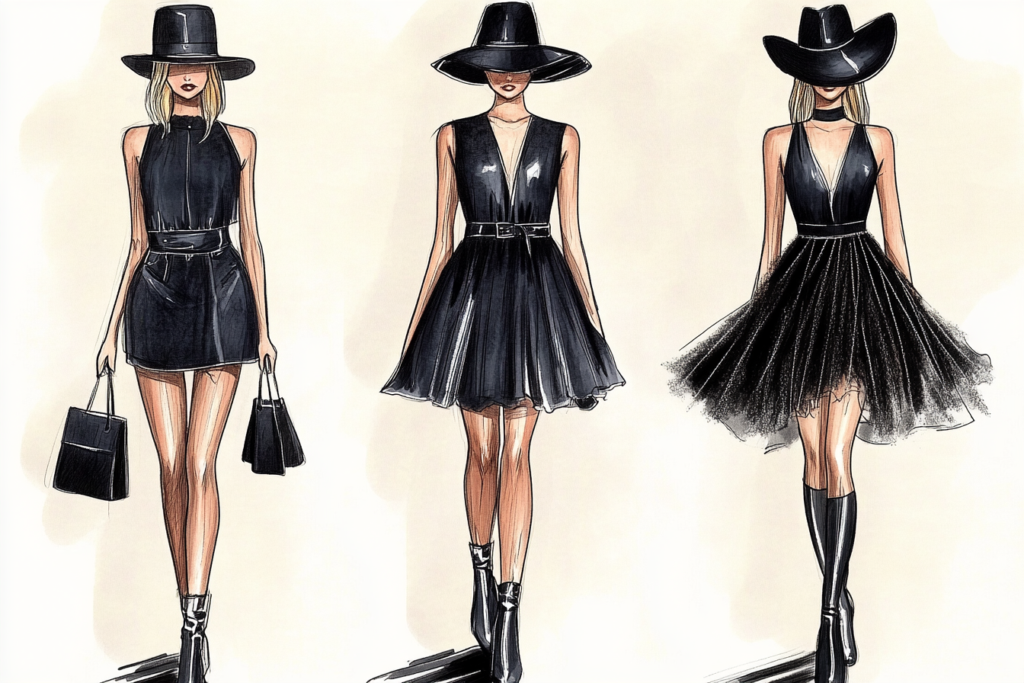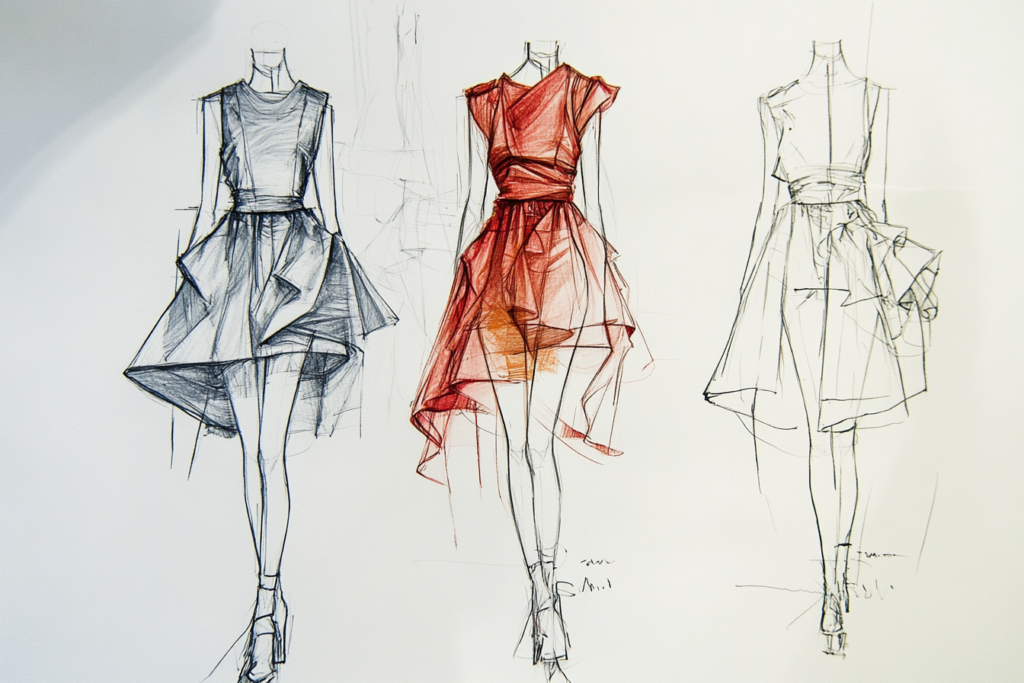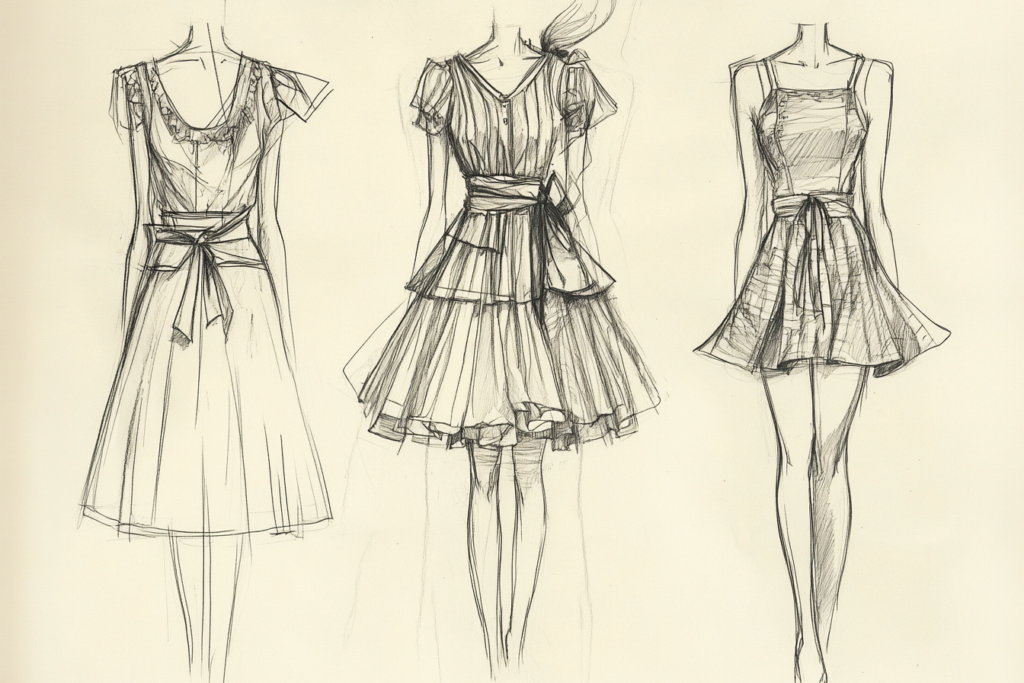Style Drawing (Float): The Simplified Garment Illustration
Meta Description: A style drawing, also called a float, is a simplified version of a clothing design, often used to showcase the garment without models. Learn about its role in fashion design.
What is a Style Drawing (Float)?
A style drawing, also known as a float, is a simplified illustration of a garment, typically created without the inclusion of models. These drawings focus primarily on the design and construction of the garment, offering a clear view of its silhouette, details, and overall look. Style drawings are often used in the fashion industry for various purposes, including technical sketches, design communication, and product development.
The term float is commonly used in the fashion industry to refer to a basic, minimalistic garment drawing that highlights key details, such as seams, lines, fabric flow, and proportions. While more detailed fashion illustrations may feature models wearing the designs, style drawings (floats) do not include figures, making them easier to focus on the garment’s technical elements.


Purpose and Importance of Style Drawings
- Simplified Representation:
- Style drawings are meant to simplify the visual representation of a garment. This allows designers, manufacturers, and technical teams to focus on the construction and details of the piece without distractions from the model’s pose or styling.
- Effective Communication:
- These drawings are essential for communicating design ideas between designers, pattern makers, and production teams. A clear, precise float ensures that everyone understands the garment’s dimensions, design features, and construction techniques.
- Development Tool:
- Style drawings are integral to the product development process. They act as a foundation for creating the pattern, prototype, and final garment. Designers may use these drawings to work out sizing, proportions, and fabric choices before moving on to more detailed iterations.
- Fashion Industry Standard:
- In the fashion industry, especially for mass production or collections, style drawings are part of the technical pack (tech pack), which includes all the specifications needed for garment manufacturing. They play a crucial role in streamlining the design-to-production process.
How to Create a Style Drawing (Float)
Creating a style drawing (float) involves simplifying the design elements of the garment and focusing on key technical details. Here are the steps to create an effective style drawing:
- Start with a Basic Silhouette:
- Begin by drawing the basic outline of the garment. This should include the overall shape, length, and proportion of the design. Focus on showing how the garment fits or hangs on a hypothetical model.
- Highlight Key Design Features:
- Add details like pockets, zippers, seams, cuffs, and collars. Be sure to depict these elements accurately, as they will influence the construction of the final garment.
- Include Fabric and Texture Notes:
- While the drawing itself is often kept minimal, note the type of fabric or material used for each part of the garment. Designers may also include texture details or special finishes like embellishments or embroidery.
- Provide Measurement Details:
- For a fully functional style drawing, include measurement details such as waist size, inseam, hem width, and garment length. These are necessary for pattern making and to ensure that the design fits the intended dimensions.
- Use Annotations:
- Use callouts or annotations to further explain key features of the garment, such as special stitching, fasteners, or pleats. These notes help production teams understand how to execute the design.
- Keep it Clean and Clear:
- Style drawings should be clear and easy to understand. Avoid overly complex illustrations and focus on conveying essential design details. A simple, clean drawing is more effective than a cluttered or overly intricate one.
Applications of Style Drawings
Style drawings (floats) are used in various stages of the fashion design and production process. Here are a few key applications:
- Concept and Design Communication:
- Designers use floats to communicate the basic ideas and structure of their designs to clients, teams, and manufacturers. It serves as the first step in turning an idea into a physical product.
- Tech Packs for Manufacturing:
- Floats are often part of a technical package (tech pack) that is sent to manufacturers for production. This includes the design’s technical specifications, measurements, fabric types, and any necessary instructions for construction.
- Pattern Making:
- The float serves as the foundation for creating the garment’s pattern. Pattern makers will refer to the style drawing to construct the correct templates for cutting and sewing the fabric.
- Marketing and Lookbook Creation:
- Although style drawings are technical, they can also be used for marketing purposes. Some brands may include floats in their lookbooks or collection presentations to showcase the design without the distraction of a model or setting.
Key Features of a Style Drawing (Float)
- Minimalistic Design: Focuses on the garment, not the model.
- Clean Lines: Simple and clear representation of the garment.
- Annotations: Labels or callouts to specify garment details.
- Proportions: Accurate measurements to help with pattern making.
- No Models: Unlike fashion illustrations, floats don’t include a figure.
- Fabric/Texture Notes: To indicate material used in different sections of the garment.
Style Drawing vs. Fashion Illustration
While both style drawings and fashion illustrations serve to present a clothing design, they differ in their level of detail and purpose:
- Style Drawing (Float):
- Primarily used for technical communication.
- Focuses on garment construction, proportions, and fabric choices.
- Simple, clean, and without a model or styling.
- Fashion Illustration:
- Depicts the garment on a model, often with stylized poses.
- Includes more artistic elements and styling.
- Focuses on conveying the mood, aesthetic, and styling of the design.
Conclusion: The Role of Style Drawings in Fashion Design
A style drawing (float) plays a critical role in garment design and production. By stripping away the distractions of a model and styling, these drawings highlight the essential elements of a garment—its silhouette, proportions, and technical details. Whether used for conceptual communication or manufacturing, style drawings provide the foundation for transforming a design idea into a finished product.



